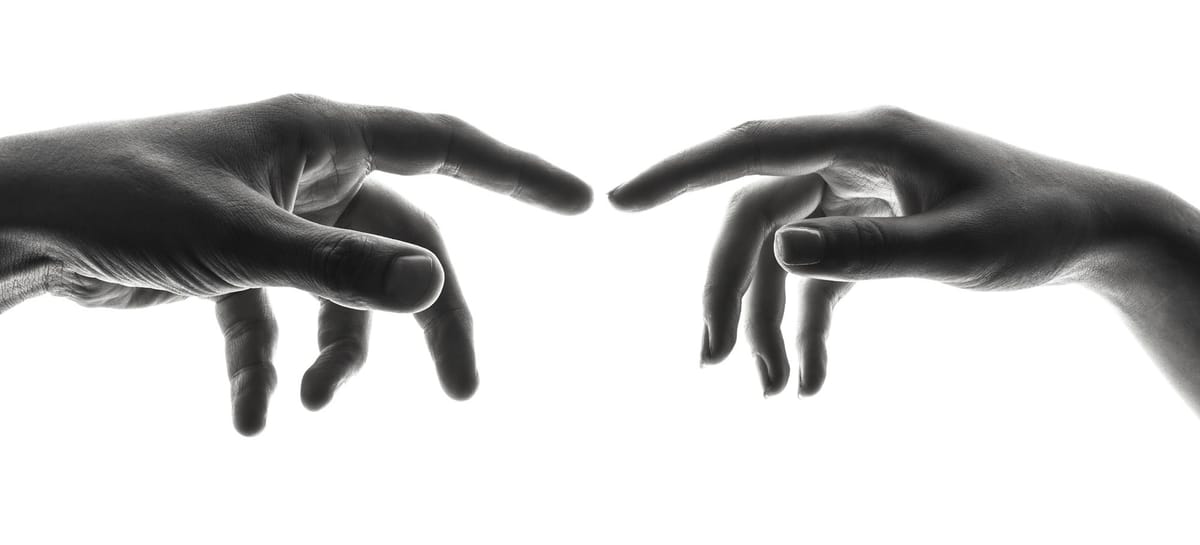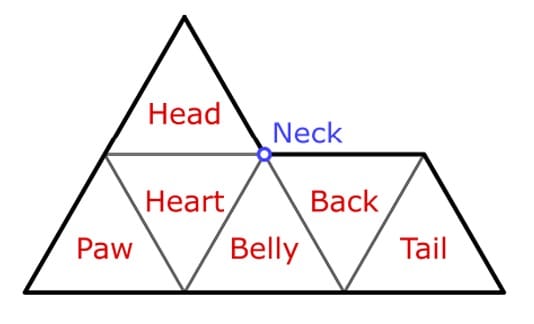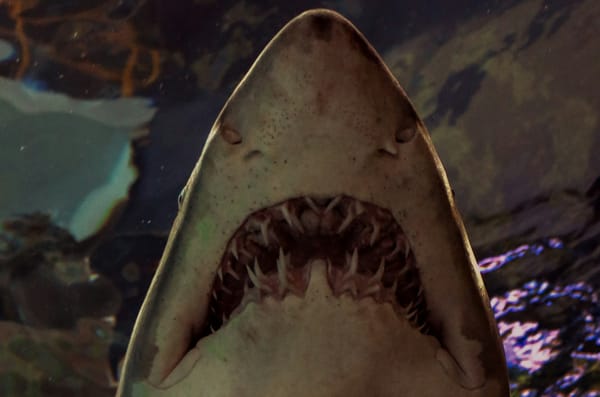The Frog Pond #17: Riddle of the Sphinx
It's not just people that have left and right "handedness" - so does, well, everything in biology!

It's not just people that have left and right "handedness" - so does, well, everything in biology!
How the Sphinx shape solved a left/right mystery
Chirality in biology is the idea that there's asymmetry in anything from molecular structures to the shells of snails, and that the asymmetry (either dextral for right-handed or sinistral for left-handed) can favour one over the other1. But why?
The "Sphinx" shape is an asymmetric shape that a team of biophysicist at the Chan Zuckerberg Biohub Network have used to figure out why left- and right-handed molecules can be so unbalanced in numbers1.

The pictured shape is the smallest asymmetrical, or chiral, shape that can be formed by triangles. Using them like tiles to form a larger sphinx shape, the biophysicists ran simulations to figure out the statistical probability of left- or right-handed Shinx shapes in a population1.
They found that the difference comes from the energy levels. If interactions between the shapes were high (such as high in temperature) the shapes jostled in a more equal pattern. But if interactions were low they tended to form in mainly left-handed tiles with small clusters of right-handed ones1.
Understanding the underlying patterns of molecular structures can help understand things like virus structures2 or how magnetism may set off the chain reactions that creates this asymmetry3.
Chirality in animals
Gastropod shells (like snail shells) are a prominent example of an animal that follows a chiral spiral. Over 90% of gastropod species have right-handed shells, with very few having left-handed4. But! Sinistrality, or abundance in left-handedness, has happened independently 19 times in marine gastropods since the start of the Cenozoic (roughly the last 66 Million years)5. Remind you of any other independent phenomenon?
(If you think you've seen a lot of left-handed shells in photos, it may be because of some cameras flipping the photo horizontally!)
Chirality in these snail shells happen in early "cleavage", or early development of snail embryos. This has been attributed to the NODAL gene, which is also the gene that's responsible for human asymmetry internally (like how your heart is larger on one side and not directly in the middle of your chest)6. Situs inversus is the congenital condition when this doesn't happen and the major organs of a person are either reversed or mirrored and found in about 1 in every 10,000 people7.
Keeping drugs matched
Did you know a drug or chemical compound can interact with your body differently depending on how its atoms are arranged? Thalidomide, a morning sickness drug, can either have a sedative effect or cause birth defects depending on the chirality of its atoms8.
Clinical trials of resveratrol, a compound found in red grapes and peanuts, was found to have inconsistent results in treating Alzheimer's disease. A potential reason for this was that two chiral forms of resveratrol were used - one that could help with cognition and memory, and one that could be toxic to the nervous system9.
A word from a passing frog
I hope you had a great March! Mine has been a bit all over the place. There's been some ups and downs on the job-search front and I've been trying to get back into healthy habits. Some days have been warm enough not to wear a jacket, then we got hit with an early April snowstorm. I'm looking forward to the upcoming solar eclipse on Monday!
Writing
I've been working on a few different projects as I prepare for what I work on next. It's been so fun going back to old books to see what I want to tackle!
Publishing
I'm going on my second month on submission for my maritime gothic horror novel! I'm in good spirits (I think my querying experience gave me a lot of the tools I needed for this) and feeling hopeful!
Reading
I finished 6 books in March and early April, bringing my year's total to 18 so far (my year goal is 30!). I also got to attend a silent reading event at a local brewery!
The Selection by Kiera Cass: A dystopian YA book that I remember seeing the cover of everywhere back in the early 2010s. Read for research!
The Kamogawa Food Detectives by Hisashi Kashiwai: A slice of life mystery series about a father/daughter restauranteur duo who solve food-related (and often deeply personal) mysteries for people from across Japan. Super cozy and satisfying!
Pride and Prejudice by Jane Austen: Re-read for research! Surprise surprise, it didn't disappoint :)
The Haunting of Hill House by Shirley Jackson: I've surprisingly not read this before! Loved the disassociated, off-kilter voice. A classic for a reason!
An Education in Malice by S.T. Gibson: An adult dark academia book with a vampire twist. The academic portions reminded me a lot of Bunny, which is a favourite of mine, and the vampire angle was a lot of fun. Read for research!
Whalefall by Daniel Kraus: A literary horror that's half childhood trauma, half inside a sperm whale. I was really looking forward to this one and it didn't disappoint!
Watching/Playing
I've been enjoying a lot of sci-fi and sci-fantasy lately! Dune 2, The Three-Body Problem (both the Tencent and Netflix adaptions), and re-watching The Expanse has kept my viewing very space-based and I've got no complaints.
And I've been playing a TON of Stardew Valley since the 1.6 update was launched!
Footnotes
1: https://www.sciencealert.com/a-shape-called-a-sphinx-could-explain-handedness-in-biology
2: https://www.sciencedirect.com/science/article/abs/pii/S0022283602011385?via%3Dihub
3: https://www.quantamagazine.org/magnetism-may-have-given-life-its-molecular-asymmetry-20230906/
4: https://pubmed.ncbi.nlm.nih.gov/16217668/
6: https://pandasthumb.org/archives/2009/04/snails-have-nod.html
8: https://www.nytimes.com/2013/09/23/booming/the-death-and-afterlife-of-thalidomide.html and https://www.acs.org/molecule-of-the-week/archive/t/thalidomide.html
9: https://www.nature.com/articles/s41467-022-30785-8 and https://www.sciencealert.com/some-drugs-have-mirror-image-chemical-structures-and-the-wrong-one-can-be-harmful (Note: this article was written by someone actively working on this research, so just keep that in mind when reading!)





